Contested
Currents
The Race to Electrify America
Introduction/Site
Map | Classroom Resources | Bibliography || Cover
Page
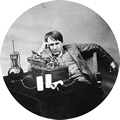 Thomas
Edison –
(February 11, 1847 – October 18, 1931) Thomas
Edison –
(February 11, 1847 – October 18, 1931) 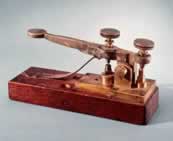
Thomas
Edison worked as a telegraph opperator and became quite familiar
with the design and manufacture of telegraphs. In
1875, he invented a "multiplex telegraph",
a system that allowed multiple telegraph signals to be sent
over a single wire. He also invented an
improved stock tape ticker, an invention he called the "Universal
Stock Printer". By selling his patents for
these inventions, Edison made enough money to create the
world’s first industrial research lab in Menlo Park, New
Jersey. It was there, in 1877, where Edison
first won internation fame by inventing the phonograph.
His fame and reputation increased even more in 1878,
when Edison improved
the incandescent light bulb.
 To
create an electrical power system for the whole nation, Edison
realized he needed the help of wealthy industralists like JP Morgan
and William Vanderbilt. On
September 4th, 1882, Edison
switched on the world's first DC electrical power distribution system,
providing 110 volts direct current (DC) to lower Manhattan, including
JP Morgan’s house and the offices of the New York Times. To
create an electrical power system for the whole nation, Edison
realized he needed the help of wealthy industralists like JP Morgan
and William Vanderbilt. On
September 4th, 1882, Edison
switched on the world's first DC electrical power distribution system,
providing 110 volts direct current (DC) to lower Manhattan, including
JP Morgan’s house and the offices of the New York Times.
To
learn more about Thomas Edison try the following activities:
ACTIVITY – Recreate a telegraph
Telegraph.pdf
Telegraph.doc
ACTIVITY – Recreate
Edison’s electric light bulb
Edison's Light Bulb1.pdf
Edison's Light Bulb1.doc
Edison's Light Bulb2.pdf
Edison's
Light Bulb2.doc
BACKGROUND
- Who really invented the light bulb?
Edison vs Latimer.pdf
Edison vs Latimer.doc
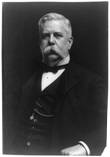 George
Westinghouse George
Westinghouse
George Westinghouse, Jr.
was born
in 1846 as the son of a machine shop owner. At the age of sixteen, George enlisted in the Navy. Throughout the United
States Civil War, he served in both the Army and Navy.
Early
in his life he witnessed a train
wreck where two train engineers saw one another, but were unable to
stop their trains in time using the existing brakes.
  In
1869, at age 22, he
invented a
railroad
braking system using compressed
air. It was patented by Westinghouse on March 5, 1872. The Westinghouse Air Brake Company (WABCO) was created to manufacture
and sell Westinghouse's invention. In
1869, at age 22, he
invented a
railroad
braking system using compressed
air. It was patented by Westinghouse on March 5, 1872. The Westinghouse Air Brake Company (WABCO) was created to manufacture
and sell Westinghouse's invention.
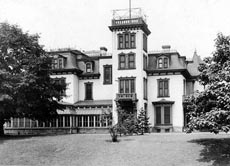 After making a small fortune selling his railroad air brakes, Westinghouse
and his new wife moved to a house in Pittsburg,
Pennsylvania, that they called, “Solitude”. This was not only
George Westinghouse’s home but also his private laboratory and a
place of
invention,
creation, and experimentation. In 1884, after striking
gas in his backyard, Westinghouse invented ways to control
and transmit natural gas to both industrial and residential consumers.
By 1886, Westinghouse
invented a piping system, an automatic cut-off regulator and
a gas meter and eventually distributed natural gas to his immediate
neighborhood. After making a small fortune selling his railroad air brakes, Westinghouse
and his new wife moved to a house in Pittsburg,
Pennsylvania, that they called, “Solitude”. This was not only
George Westinghouse’s home but also his private laboratory and a
place of
invention,
creation, and experimentation. In 1884, after striking
gas in his backyard, Westinghouse invented ways to control
and transmit natural gas to both industrial and residential consumers.
By 1886, Westinghouse
invented a piping system, an automatic cut-off regulator and
a gas meter and eventually distributed natural gas to his immediate
neighborhood.
  Because
of Westinghouse's interest
in gas distribution, he became interested in electrical
power distribution and the key to electrical power distribution, was
a power transformer developed by Lucien
Gaulard and John Dixon Gibbs in 1881.
The Gaulard-Gibbs design was one of the first that could handle
large amounts of power and was
easily manufactured. In 1885, Westinghouse imported
a number of Gaulard-Gibbs transformers and begin experimenting
with AC networks at his home in
Pittsburgh. Because
of Westinghouse's interest
in gas distribution, he became interested in electrical
power distribution and the key to electrical power distribution, was
a power transformer developed by Lucien
Gaulard and John Dixon Gibbs in 1881.
The Gaulard-Gibbs design was one of the first that could handle
large amounts of power and was
easily manufactured. In 1885, Westinghouse imported
a number of Gaulard-Gibbs transformers and begin experimenting
with AC networks at his home in
Pittsburgh.
To
learn more about George Westinghouse try the following activity:
ACTIVITY – Better understand Westinghouse's AC power.
AC
LED Lasso.pdf
AC
LED Lasso.doc
DISCUSSION QUESTIONS:
Both
Westinghouse and Edison knew the incredible potential of electricity
and wanted the power to control its distribution.
- What
would you do if you were Westinghouse or Edison in this situation?
- What
should scientists and business leaders do with new technologies?
The
Race Heats Up
On
September 4th, 1882, Edison switched
on the world's first DC
electrical power distribution system, providing 110 volts direct
current (DC) to 59 customers in lower Manhattan, around his
Pearl Street laboratory.
 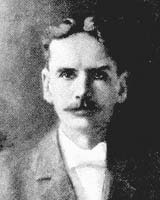 In 1886, Westinghouse and
William Stanley installed the first multiple-voltage
AC power system in
Great Barrington, Massachusetts. The network was driven by a hydropower
generator that produced 500 volts AC. The voltage was stepped up to
3,000 volts for transmission, and then stepped back down to 100 volts
to power
electric lights. That same year, Westinghouse formed the "Westinghouse
Electric & Manufacturing Company", renamed the "Westinghouse
Electric Corporation" in 1889. In 1886, Westinghouse and
William Stanley installed the first multiple-voltage
AC power system in
Great Barrington, Massachusetts. The network was driven by a hydropower
generator that produced 500 volts AC. The voltage was stepped up to
3,000 volts for transmission, and then stepped back down to 100 volts
to power
electric lights. That same year, Westinghouse formed the "Westinghouse
Electric & Manufacturing Company", renamed the "Westinghouse
Electric Corporation" in 1889.
 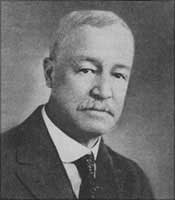 By 1889, Westinghouse's AC networks were winning market share and
Edison saw his last opportunity to defeat his rival. Edison hired an
outside engineer named Harold
P. Brown, who pretended to be impartial, but performed
public animal electrocutions with AC power. By 1889, Westinghouse's AC networks were winning market share and
Edison saw his last opportunity to defeat his rival. Edison hired an
outside engineer named Harold
P. Brown, who pretended to be impartial, but performed
public animal electrocutions with AC power.
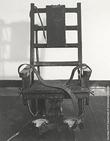 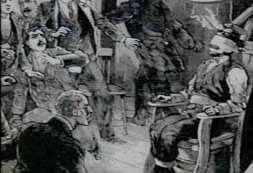 In
1887, Edison told the state board that AC was so deadly that
it would kill instantly, making it the ideal method of execution.
His prestige was so great that his recommendation was adopted. In
August 1890, a convict named William
Kemmler became the first person to be executed
by electrocution. The execution was messy and protracted, and
Westinghouse protested that they could have done better with
an axe.
Edison promoted the idea of AC electrocution, calling the new procedure "Westinghousing" which
failed. In
1887, Edison told the state board that AC was so deadly that
it would kill instantly, making it the ideal method of execution.
His prestige was so great that his recommendation was adopted. In
August 1890, a convict named William
Kemmler became the first person to be executed
by electrocution. The execution was messy and protracted, and
Westinghouse protested that they could have done better with
an axe.
Edison promoted the idea of AC electrocution, calling the new procedure "Westinghousing" which
failed.
DISCUSSION QUESTIONS:
-
Should
scientists and engineers promote their ideas and inventions?
-
Should
they promote their ideas by discrediting others?
-
Is
the “progress” of science always positive?
In
1893, Westinghouse won a significant victory. The
Westinghouse company was awarded the contract to set up an AC network
to
power the World's
Columbian Exposition in Chicago,
giving the company and the technology widespread positive publicity.
Westinghouse also received a contract to set up the first long-range power
network, with AC generators at Niagara
Falls producing electricity for distribution in Buffalo,
New York, 40 kilometers (25 miles) away.
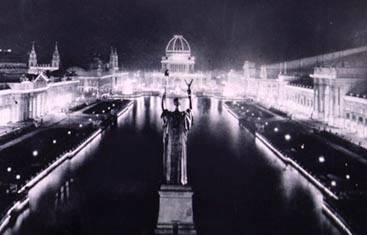
Introduction/Site
Map | Classroom Resources | Bibliography || Cover
Page
|